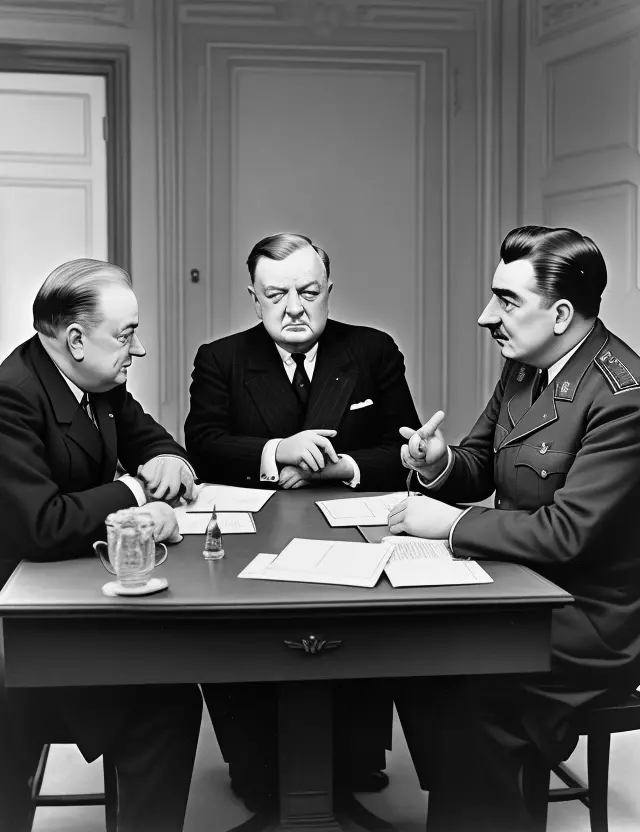Alliance in Action: The Tehran Conference of 1943
A Historic Meeting of World Leaders during World War II

Alliance in Action: The Tehran Conference of 1943
On December 4, 1943, in the midst of World War II, a historic meeting took place in Tehran that would shape the course of history. U.S. President Franklin D. Roosevelt, British Prime Minister Winston Churchill, and Soviet Premier Joseph Stalin gathered for the Tehran Conference to discuss wartime strategy, solidify their alliance, and address critical issues facing the Allies.
Context of the Tehran Conference
By late 1943, the Allies were gaining momentum, but the war was far from over. The Tehran Conference represented a pivotal moment for leaders to coordinate military efforts, discuss post-war plans, and strengthen the bonds of the Grand Alliance against the Axis powers.
Key Players: Roosevelt, Churchill, and Stalin
The meeting brought together three key figures: U.S. President Franklin D. Roosevelt, British Prime Minister Winston Churchill, and Soviet Premier Joseph Stalin. Their presence underscored the commitment of the Allied powers to collaborate on strategic objectives and ensure a coordinated approach to defeating the Axis forces.
Discussions on Wartime Strategy
Central to the Tehran Conference were discussions on wartime strategy. The leaders deliberated on military operations, including the planning of the Normandy invasion (D-Day) and the opening of a Western Front to complement the Eastern Front where the Soviet Union was already engaged in heavy fighting against the German forces.
Strengthening the Alliance
Beyond military strategy, the Tehran Conference served to strengthen the political and diplomatic bonds among the Allies. The leaders affirmed their commitment to a united front against the common enemy and laid the groundwork for the later conferences at Yalta and Potsdam, which would further shape the post-war world order.
Legacy of Cooperation
The Tehran Conference stands as a testament to the power of international cooperation during challenging times. Despite differing ideologies and political systems, the leaders of the United States, the United Kingdom, and the Soviet Union found common ground in their pursuit of victory over the Axis powers.
Commemorating a Pivotal Moment
As we reflect on December 4, 1943, let us commemorate the Tehran Conference as a pivotal moment in World War II. The unity forged during this historic meeting played a crucial role in the ultimate defeat of the Axis powers and laid the foundation for a post-war world striving for peace and cooperation.
Join us in remembering the Tehran Conference of 1943 as a symbol of alliance and cooperation in the face of global conflict. The decisions made during this meeting reverberated throughout the remainder of World War II and beyond, shaping the destiny of nations and the course of history.



